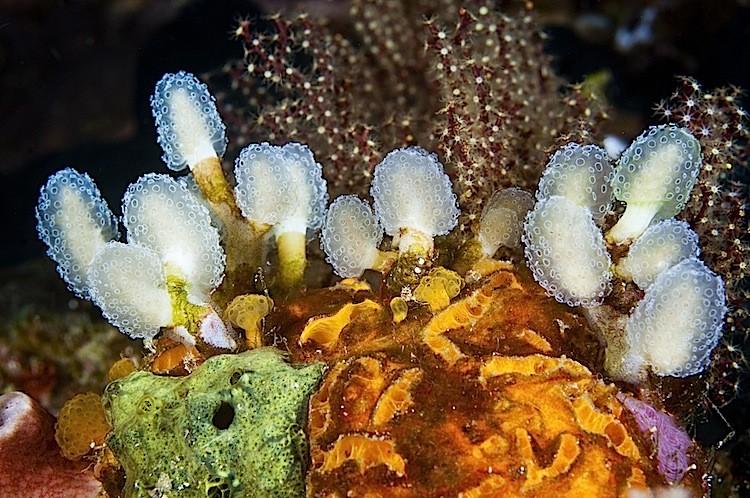Ascidians or sea squirts are small sac-like filter-feeding invertebrates, but are more similar to vertebrates than to invertebrates like corals or sponges.
They are sessile animals; they attach to substrates like rocks and shells, and pump water through their bodies to extract particles of food, mainly plankton.
There are around 2,300 species of sea squirts. Different species have different growth forms and can be colonial or solitary, and encrusting or stalked. Some colonies can reach several meters in diameter.
Ascidians are very common and diverse in cold waters of the southern part of Komodo National Park in Indonesia.
The park is home to the unique Komodo Dragon, but also has some remarkable marine life. Cold upwellings from the Indian Ocean to the south bring plenty of nutrients, providing food for a spectacular array of different species.
Matthew Oldfield is a freelance photographer based in Bali, Indonesia, specializing in editorial and documentary images from both above and below the waves. He works primarily with charities, NGO’s, and other organizations working to conserve the environment, endangered species, and disappearing cultures.
Matthew is on Twitter @matthewophoto. More of his photos can be found at matthew-oldfield-photography.com
The Epoch Times publishes in 35 countries and in 19 languages. Subscribe to our e-newsletter.








